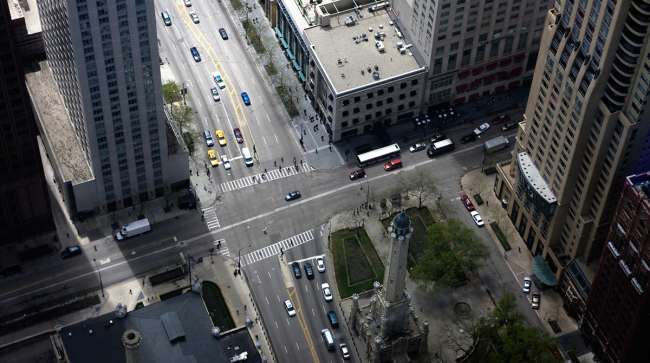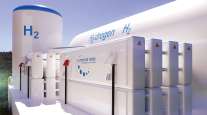Staff Reporter
DOE Grant Supports Traffic Optimization, Fuel Consumption Research

[Stay on top of transportation news: Get TTNews in your inbox.]
The Department of Energy has awarded a group of partners representing three universities, Oak Ridge National Laboratory and the city of Chattanooga, Tenn., a grant to research traffic control system optimization with an aim to reduce emissions.
Specifically, the $1.89 million grant will be used to create a new model for intersections that manages traffic movement and helps address energy consumption.
The academic institutions are the University of Tennessee at Chattanooga (UTC), the University of Pittsburgh and the Georgia Institute of Technology.
Traffic infrastructure is getting smarter, as are vehicles. What if #ArtificialIntelligence connected both to create a safer and more energy efficient transportation system? @UTChattanooga & Pitt are working on that, thanks to a $1.89MM award from @ENERGY: https://t.co/cHzkGdaxaN — Swanson School of Engineering (@PittEngineering) September 24, 2020
“The goal of the project is to see how can we leverage connected vehicles and connected infrastructure to improve the traffic flow and, as a result of that, we can improve the traffic congestion, fuel consumptions and emissions,” Mina Sartipi, director of UTC’s Center for Urban Informatics and Progress, told Transport Topics.
In its proposal submitted to DOE, the research team said that the U.S. transportation sector accounted for more than 69% of petroleum consumption and more than 37% of the country’s carbon dioxide emissions.
The team will work to develop a dynamic feedback Ecological Adaptive Traffic Control System that reduces fuel consumption and greenhouse gases while maintaining an operable and safe environment.
“Right now, when you just consider regular traffic, signals are not necessarily optimized to reduce fuel consumption,” Aleksandar Stevanovic, associate professor at the University of Pittsburgh’s Swanson School of Engineering and project team member, told TT. “In the long term, we have no doubt that this is going to be a super important thing and sooner or later any percent or half of a percent of the fuel consumption that we can reduce, that would be beneficial.”
From a trucking perspective, Stevanovic said it’s valuable to assess how trucks compare with other vehicles, both physically and in terms of fuel consumption. Expenses related to fuel are important in the trucking industry.

What does it take to be a commercial driver, and what are schools doing to train them? Host Michael Freeze speaks with Chris Thropp of Sage Truck Driving School and Don Lefeve of the Commercial Vehicle Training Association. Hear a snippet, above, and get the full program by going to RoadSigns.TTNews.com.
According to the American Transportation Research Institute’s report “An Analysis of the Operational Costs of Trucking,” fuel costs made up 24% of carriers’ total average costs in 2018.
“In this particular project, we’re going to look energy-wise, fuel consumption-wise and emissions-wise, when you stop that truck, how many vehicles is it equivalent to?” Stevanovic said. “What is their energy or emissions footprint is one thing, and to know what to do with that information to adjust traffic signals is another thing.”
Sartipi explained the project will take three years. The first year will focus on algorithms that will be needed for the research. In the second year, the team’s work will be deployed in a simulation environment to be tested and verified. The third year will involve implementation in the Center for Urban Informatics and Progress’ existing smart corridor.
Located on a portion of Martin Luther King Boulevard in downtown Chattanooga, the smart corridor is outfitted with a variety of devices, including air quality sensors, cameras and lidar.
“From the education perspective, I think one of the things about projects like this is it would provide opportunities for students from different backgrounds to work together and learn from each other,” Sartipi said. “That is something that we will definitely be looking into as well, to see how this can be expanded to other cities.”
Want more news? Listen to today's daily briefing:
Subscribe: Apple Podcasts | Spotify | Amazon Alexa | Google Assistant | More




